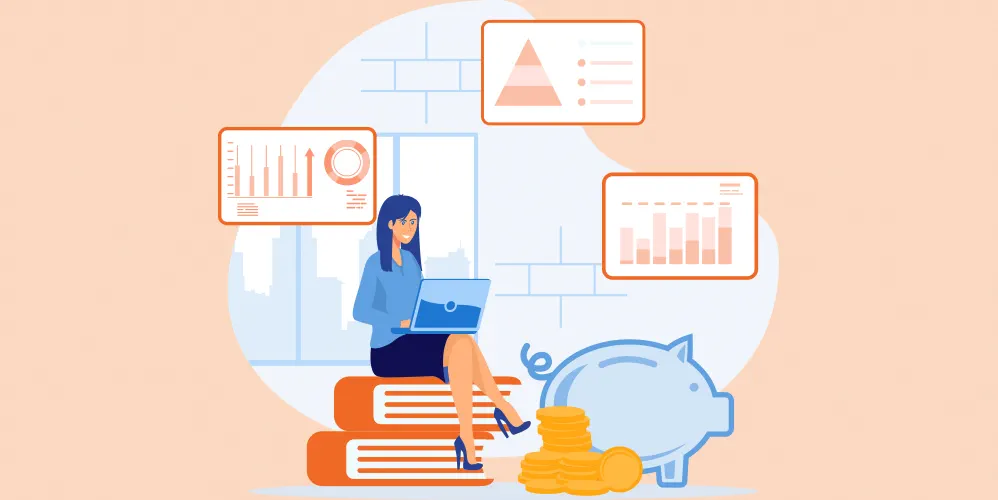
What is current account
03 Jul 2019

Table of Content
Banks offers several kinds of accounts to customers depending on their needs. Two of the most popular are savings account and current account.
What is Current Account?
So what is current account? Current account is for those who have a very high volume of transactions – whether debit or credit. Hence it is meant for conducting a business, and generally opened for businessmen, traders and service providers. Sometimes current accounts are also called demand deposit accounts. No interest is paid on these accounts, sometimes even a fee is charged for banking services.
To understand the current account meaning, let’s look at its various features.
Features of Current Account
- High liquidity
Current accounts are meant to ensure a high level of liquidity. Money flows constantly in and out of an account. Customers use it not as an investment, but as a tool to facilitate daily business transactions. They issue cheques to those with whom they have business dealing, and, in turn, receive cheques from them.
- Interest rates
One feature of a current account is that deposits made in it does not earn interest. This is because, as we have pointed out earlier, the current account definition is that it’s a tool for conducting business, not an investment avenue. On the other hand, a savings account earns some interest for customers – albeit small. However, there are some banks that offer a sweep-in facility. That is, if the balance reaches a certain level, it is automatically transferred to a savings account or a fixed deposit , where it can earn some interest.
- Overdraft
When you are finding out what is current account in bank, you need to understand the concept of an overdraft. Business transactions are quite fluid and rapid, and sometimes there could be a gap in the inflows and outflows. Banks in that case provide an overdraft facility so that any cheques issued are not dishonoured.
Advantages of Current Account
- Enables businesspersons to keep the flow of money smooth and get and make payments on time.
- Overdraft facilities are available to tide over any temporary cash flow issues.
- Internet and mobile banking enable smooth and error-free transactions.
- Very handy for large volume of transactions.
All Indian banks offer current account facilities. You can open one in any bank by completing formalities like submitting PAN card, Certificate of Incorporation, address proof of the company, ID and address proof of partners and directors etc.
Difference Between Savings Account and Current Account
Now that we explained what is meant by current account, let’s compare it with a savings account. How different are the two accounts?
- Interest rates: Savings banks offer interest to encourage customers to save. Current account is focused on money flows, so no interest is offered. In fact, charges may be levied.
- Target customers: The target customers of a current account are businessmen, traders and service providers. Savings accounts are meant for individuals, especially for salaried persons with a monthly income.
- Minimum balance: Both savings accounts and current accounts require a minimum balance to be maintained. However, this is higher in the case of current accounts.
- Overdraft: While a current account offers overdraft facility, no such facility is available in a savings account.
- Number of transactions: The number of transactions allowed in a current account is quite large. It’s much smaller in the case of .
Popular Articles
Related Articles





What Is Joint Account? - Meaning, Benefits, Application Process & How its Work





-
Disclaimer
The contents of this article/infographic/picture/video are meant solely for information purposes and do not necessarily reflect the views of Bank of Baroda. The contents are generic in nature and for informational purposes only. It is not a substitute for specific advice in your own circumstances. Bank of Baroda and/ or its Affiliates and its subsidiaries make no representation as to the accuracy; completeness or reliability of any information contained herein or otherwise provided and hereby disclaim any liability with regard to the same. The information is subject to updation, completion, revision, verification and amendment and the same may change materially. The information is not intended for distribution or use by any person in any jurisdiction where such distribution or use would be contrary to law or regulation or would subject Bank of Baroda or its affiliates to any licensing or registration requirements. Bank of Baroda shall not be responsible for any direct/indirect loss or liability incurred by the reader for taking any financial decisions based on the contents and information mentioned. Please consult your financial advisor before making any financial decision.
Types of Bank Accounts & Deposits in India
What are the types of accounts and deposits available?
It’s important to know where you can save your money. As the rule goes, high-risk on your capital can result in a higher return while investing money in low-risk instruments would result in lower interest.
Banks, including Bank of Baroda offer a host of instruments that are what can be termed as low on risk and medium to low on return.
We shall now look at the various instruments that are available to a customer to deposit their money with the bank and earn returns.
Types of Deposits
A primary function for a bank is to mobilise public money. They do so in the form of deposits. There are two types of deposit accounts that you can open in a bank. They are time deposits and demand deposits.
Time Deposits
A Time Deposit also known as a Term Deposit is a deposit which has a fixed tenure and earns interest for the customer. The tenure varies for each instrument and may even change from bank to bank.
The most widely used name for time deposits is Fixed Deposits. The common feature among all Time deposits is that they cannot be withdrawn prematurely. One should thus plan their deposits according to their requirement for money going forward.
The more the money resides in the bank of a term deposit the more interest it earns. Banks pay higher interest in longer-term deposits than on shorter ones.
Fixed Deposits earn higher interest than a Savings Account because the former gives Banks leg room to lend to people who need the money for roughly the same time limit. For example, a one year fixed deposit in a bank can allow the bank to lend money to a person who requires a personal loan for one year period.
Commercial banks have over the years made Fixed Deposits more attractive by offering various frills like overdraft facility, zero cost credit cards, nomination facility, safe deposit lockers, internet banking among others.
Recurring Deposits
In this case, a fixed amount, as decided by the depositor, is deposited at regular intervals till the end of the tenure. The accumulated interest and the principal is given back to the depositor at the end of the tenure. The tenure of a recurring deposit can be anything from six months to 120 months.
Demand Deposits
As the name suggested, you can withdraw this deposit on demand. Such funds are held in accounts where it is easier to withdraw money either by going to the bank or an ATM. Savings and Current accounts are the two types of commonly used Demand Deposits account,
In such type of deposits, the risk is low but so is the return. However, there is one more factor that this type of deposit has and that is liquidity since money can be withdrawn at a moment’s notice.
The reason for the existence of such accounts is to provide the customer convenience of meeting his daily requirement of funds. It does not serve the purpose of ‘investment’ or ‘wealth creation’.
TYPES OF ACCOUNTS
Savings Account
These are interest-bearing accounts where the rate of interest depends on the bank where it is deposited. Further, there are restrictions in terms of the number of times money can be withdrawn from this account. These restrictions are also imposed by the bank and may vary between two banks. The depositor can withdraw his money by going to the bank and use the withdrawal slip or use his cheque book or go to an ATM and use his card. Money can also be transferred to someone else by using the cheque facility or using an electronic mode of transfer.
Current Account
This type of account is generally operated by companies and firms. These are the non-interest-bearing deposit and serve the purpose of providing liquidity. Since there are many transactions in these accounts, the cost of managing them is high. Hence banks ask the depositors to maintain a minimum deposit. Current accounts have overdraft facility which the banks provide the customers to meet their short-term liquidity mismatch.

